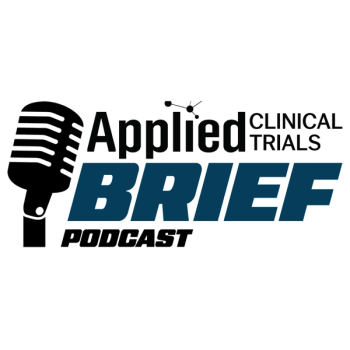Key takeaways
- Robust primary endpoint success: Upadacitinib achieved ≥80% scalp hair coverage in over half of patients at the 30 mg dose by week 24, highlighting a clear efficacy signal in a challenging autoimmune indication.
- Comprehensive trial design: The UP-AA program's structure—two independently randomized studies under a single protocol with global enrollment across 248 sites—offers a scalable model for high-impact immunology trials.
- Favorable safety and retention metrics: Low rates of serious adverse events and discontinuations, alongside encouraging extension-phase plans, underscore strong patient adherence and manageable safety for long-term development.
AbbVie has shared positive, topline data from the Phase III UP-AA clinical trial (NCT06012240) evaluating once daily upadacitinib (RInvoq) in adult and adolescent patients with severe alopecia areata (AA).1
AbbVie shares positive topline results from UP-AA Study 2
The UP-AA program includes two studies under one protocol. In this announcement, AbbVie shared results from Study 2, which achieved its primary endpoint. At doses of 15 mg and 30 mg, upadacitinib demonstrated that 44.6% and 54.3% of patients with severe AA, respectively, reached 80% or more scalp hair coverage at 24 weeks as defined by the severity of alopecia tool (SALT) score ≤ 20.
In a press release, Kori Wallace, MD, PhD, vice president, global head of immunology clinical development, AbbVie, said: "Often misunderstood as a cosmetic issue, AA is a systemic immune-mediated disease that can cause total hair loss, involving the scalp, eyebrows and eyelashes. People living with AA may face difficulties in managing their disease, which can significantly affect their quality of life. UP-AA is the first pivotal program to have ranked and met the rigorous standard of SALT=0, indicating complete scalp hair regrowth. These data underscore AbbVie's commitment to advancing novel treatments that have the potential to improve the lives of individuals with immune-mediated diseases."
UP-AA Study 2 secondary endpoint results
Additional findings from Study 2 of the UP-AA trial showed:
- At week 24, 36.0% of patients on upadacitinib 15 mg and 47.1% on 30 mg achieved at least 90% scalp hair coverage, versus 1.4% with placebo (p<0.001).
- Both doses also improved eyebrow and eyelash hair growth and increased rates of full scalp hair regrowth (SALT = 0).
- Serious adverse events occurred in 1.4% (15 mg) and 2.8% (30 mg) of patients, with no such events in the placebo group.
- Discontinuations due to adverse events were low: 0.7% (15 mg) and 1.4% (30 mg), with none in the placebo group.
- The most common side effects included acne, nasopharyngitis, and upper respiratory infections.
- Serious infections were rare: 0.7% (15 mg) and 1.0% (30 mg), with none reported in the placebo group.
- No major cardiovascular events, cancers, or deaths occurred; one blood clot was reported in a high-risk patient on the 15 mg dose.
In the press release, Arash Mostaghimi, MD, MPA, MPH, associate professor of dermatology and vice chair of clinical trials and innovation, Brigham & Women's Hospital, Harvard Medical School, added: "The sudden and often unpredictable hair loss people living with AA experience can profoundly impact their self-esteem and mental well-being. There is a pressing need for more treatments that help enable regrowth of scalp and non-scalp hair. I am encouraged by these results that demonstrate the potential of upadacitinib to be an important new treatment option."
Study design and trial structure
As previously mentioned, UP-AA consists of two studies. Both are Phase III, placebo-controlled, double-blind trials evaluating the efficacy and safety of upadacitinib in adult and adolescent subjects with severe AA.2
- The two studies (Study 1 and Study 2) were conducted under a single protocol, each independently randomized, analyzed, and reported.
- A total of 1,399 participants with severe AA, aged 12 to 64, were enrolled across 248 sites globally.
- Participants were randomized to receive upadacitinib 15 mg, upadacitinib 30 mg, or placebo.
- In Period A (weeks 0–24), all participants received their assigned treatment.
- In Period B (weeks 25–52), participants on upadacitinib continued their assigned dose, while those on placebo either remained on placebo or were re-randomized based on their SALT score at Week 24.
- Participants who completed either pivotal study could enter a long-term extension (Study 3) and receive one of two upadacitinib doses for up to 108 weeks.
AbbVie is expecting results from Study 1 of UP-AA in the third quarter of 2025.
References
1. AbbVie Announces Positive Topline Results from Phase 3 UP-AA Trial Evaluating Upadacitinib (RINVOQ®) for Alopecia Areata. News release. AbbVie. July 30, 2025. Accessed July 30, 2025. https://news.abbvie.com/2025-07-30-AbbVie-Announces-Positive-Topline-Results-from-Phase-3-UP-AA-Trial-Evaluating-Upadacitinib-RINVOQ-R-for-Alopecia-Areata
2. A Study to Evaluate the Safety and Effectiveness of Upadacitinib Tablets in Adult and Adolescent Participants With Severe Alopecia Areata (Up-AA). ClinicalTrials.gov. Updated July 16, 2025. Accessed July 30, 2025. https://clinicaltrials.gov/study/NCT06012240?cond=Alopecia%20Areata&intr=Upadacitinib&aggFilters=phase:3&rank=2





